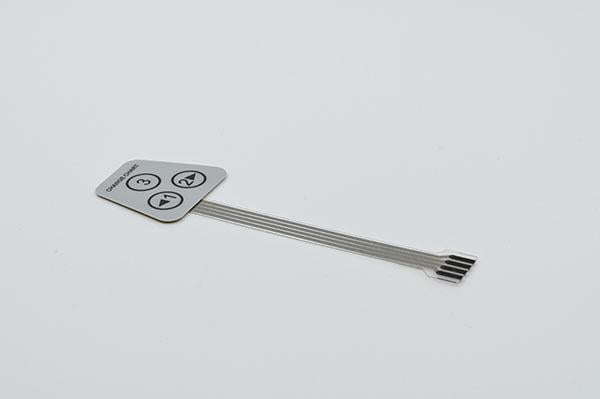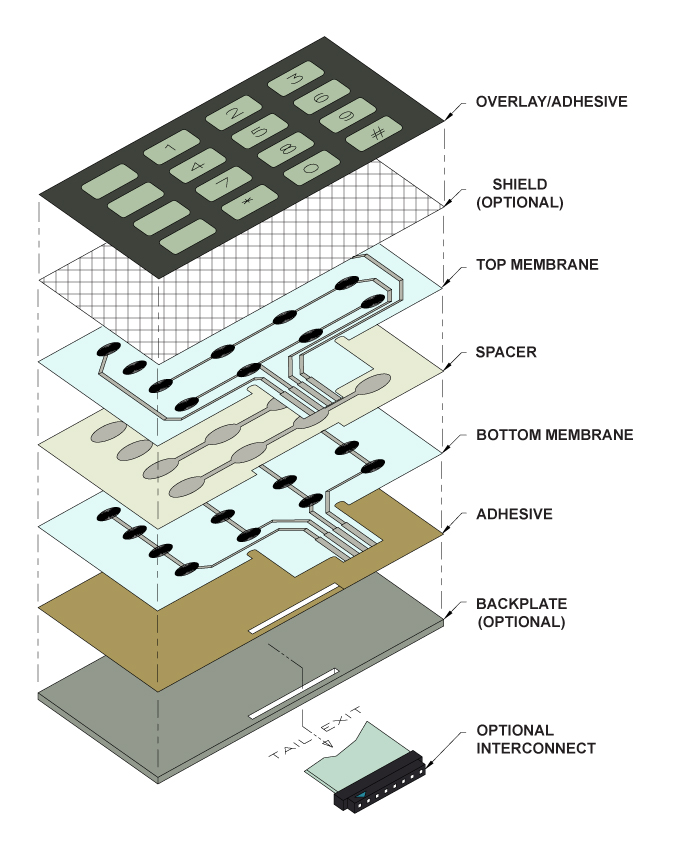Many sectors work with a reputable membrane switch manufacturer for custom solutions.
Many sectors work with a reputable membrane switch manufacturer for custom solutions.
Blog Article
All About Membrane Change: Understanding Its Layout and Performance
When you think about the control user interfaces in contemporary devices, membrane switches usually come to mind. Let's explore what sets membrane changes apart from other control systems.
What Are Membrane Layer Switches?

Membrane layer switches can also be tailored relating to shape, dimension, and graphics, enabling producers to produce special user interfaces tailored to details products. In general, membrane buttons play a considerable role in enhancing user experience throughout a broad variety of applications.
Exactly How Membrane Switches Over Work
When you press a trick on a membrane switch, it activates a simple yet efficient system. membrane switch manufacturer. The top layer, typically made of adaptable material, pushes down onto a conductive layer underneath it.
You'll notice that the tactile feedback differs based upon the switch design, offering either a soft click or a more pronounced response. When you launch the trick, the membrane go back to its initial position, resuming the circuit and quiting the signal. This procedure happens nearly immediately, ensuring a responsive user experience.
Membrane layer buttons are preferred as a result of their longevity and resistance to dust and dampness, making them optimal for different applications, from house home appliances to clinical devices. Recognizing this procedure assists you appreciate their prevalent use.
Key Elements of Membrane Layer Switches
Comprehending the crucial components of membrane buttons is essential for grasping their functionality and layout. At the core, you'll locate the graphic overlay, which supplies the visual user interface for users. Underneath that, there's a spacer layer that separates the circuit layers, making sure that they do not make call till pushed. The circuit layer is where the magic takes place; it consists of conductive traces that finish the circuit when you press the switch. Another necessary element is the sticky support, allowing the button to abide by surfaces firmly. The protective layer guards against environmental factors and put on, extending the switch's life-span. Each part plays a significant function in guaranteeing dependable efficiency and user interaction. By recognizing these elements, you'll obtain insight right into just how membrane switches run and their importance in numerous applications.
Products Utilized in Membrane Switch Over Layout
The performance and longevity of membrane changes heavily rely on the products utilized in their design. You generally experience polyester and polycarbonate as main substrates as a result of their exceptional strength and adaptability. These products stand up to scratches and chemicals, making them suitable for demanding atmospheres.
The conductive layers often utilize silver or carbon, chosen for their integrity and conductivity. membrane switch manufacturer. Silver offers exceptional performance, while carbon is an economical option. For the overlay, you might think about a matte or shiny surface, depending upon your aesthetic demands and customer experience
Make particular to pick adhesives that withstand ecological variables like temperature and humidity. Picking the ideal materials will assure your membrane layer button stands the examination of time.
Style Considerations for Membrane Buttons
While creating membrane buttons, it's important to take into account different elements that affect their performance and individual experience. Beginning by focusing on the design and button size; make particular they're instinctive and very easy to navigate.
Validate your layout accommodates environmental elements, like moisture or temperature level variants, which can impact performance. By carefully thinking about these aspects, you'll develop a membrane switch that enhances use and fulfillment.
Applications of Membrane Layer Switches
Membrane layer switches are flexible components found in various applications, from commercial equipment to customer electronic devices. You'll see their effect in machines that require long lasting interfaces and in devices that profit from streamlined styles. Understanding these applications helps you value the functionality and usefulness of membrane layer switches in day-to-day innovation.
Industrial Equipment Use
When you're looking to improve the functionality of commercial tools, membrane layer buttons use a reliable read review remedy that integrates resilience with easy to use layout. These switches are excellent for harsh settings, providing resistance to dust, wetness, and chemicals. Embrace membrane layer switches to enhance your procedures and improve general efficiency.
Consumer Electronics Assimilation
In the domain of consumer electronic devices, membrane buttons play an important function in improving user communication and device functionality. Membrane switches additionally ensure durability and resistance to dirt and moisture, extending the lifespan of your electronics. By selecting membrane layer buttons, you boost not simply the capability however likewise the style of your tools, making everyday interactions smooth and pleasurable.
Advantages and Disadvantages of Membrane Layer Switches
While membrane layer buttons use a range of benefits, they also include some drawbacks that you must take into consideration. One significant advantage is their compact design, making them ideal for space-constrained applications. They're also cost-efficient, giving a sturdy service with a low production expense. Additionally, their smooth surface area is simple to clean, boosting health in environments like anonymous health centers.

Membrane layer buttons can have a shorter lifespan contrasted to mechanical switches, especially under heavy use. They can additionally be much less tactile, which may impact individual feedback during operation. Stabilizing these pros and cons will certainly assist you determine if membrane switches are the appropriate fit for your task.
Often Asked Questions
Just How Long Do Membrane Layer Changes Generally Last?
Membrane switches over usually last in between 5 to ten check here years, depending on usage and environmental conditions. You'll want to review aspects like wear, exposure to dampness, and temperature level changes to assess their long life successfully.
Can Membrane Switches Be Customized for Specific Designs?
Yes, you can customize membrane layer switches to fit certain designs (membrane switch manufacturer). You'll have the freedom to pick colors, shapes, and formats that match your task's demands, guaranteeing they blend effortlessly with your general visual
What Is the Cost Variety for Membrane Switch Over Manufacturing?
The price variety for membrane button production typically drops between $1 and $10 per system, depending on variables like layout complexity, quantity, and products. You can get quotes from manufacturers to discover the very best alternative.

Are Membrane Layer Switches Over Water-proof or Immune?
Membrane layer switches can be developed to be water-proof or immune, relying on materials utilized and building and construction techniques. If you need them for wet atmospheres, guarantee you specify those requirements during the style process.
Just How Do Membrane Layer Changes Compare to Typical Buttons?
Membrane switches are usually thinner and much more versatile than typical buttons, offering a streamlined style. They're typically simpler to cleanse and integrate, but might not provide the tactile comments you're made use of to with mechanical options.
Conclusion

Report this page